|
Lawrence Hargrave (1850-1915)
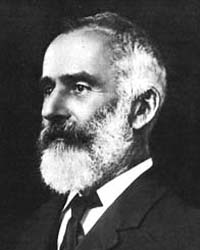
Australian
aviation pioneer, inventor, explorer, mason and astronomer.
"If there be
one man, more than another, who deserves to succeed in
flying through the air, that man is Mr. Laurence Hargrave,
of Sydney, New South Wales. He has now constructed with his
own hands no less than 18 flying machines of increasing
size, all of which fly, and as a result of his many
experiments (of which ,an account is about to be given) he
now says, in a private letter to the writer, that: "I know
that success is dead sure to come." (Octave Chanute, 1893)
Lawrence Hargrave was born in Greenwich England on January
29, 1850 and educated in England at Queen Elizabeth's
Grammar School, Kirkby Lonsdale, Westmoreland. In 1872 he
came to Australia in search of gold, but the ship chartered
by the group of adventurers was wrecked off the Queensland
coast. In the 1870's after exploring in the hinterland
behind Port Moresby, in June 1877 he decided to settle down
and elected a member of the Royal Society of New South
Wales.
In 1878 he
was appointed an assistant astronomical observer at Sydney
Observatory, a post which he held until 1883, when he
retired to devote the remainder of his life to research work
into problems connected with human flight.
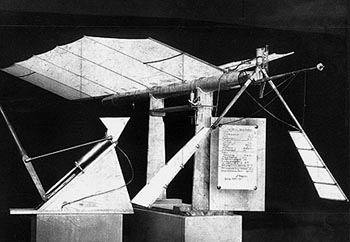
Flying Machine No.6, 1888
Single cylinder, compressed-air engine No. 12, 1890
In 1884 and 1892 he
experimented with monoplane models, and in 1889 he
constructed a rotary airplane engine, driven by compressed
air.
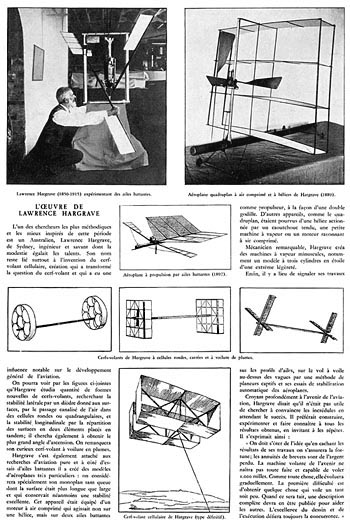
Article on Lawrence
Hargrave
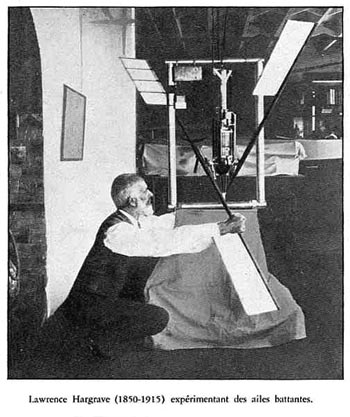
Hargrave
with his Engine No.35, single-cylinder two-stroke petrol
engine driving twin 'flappers', 1908
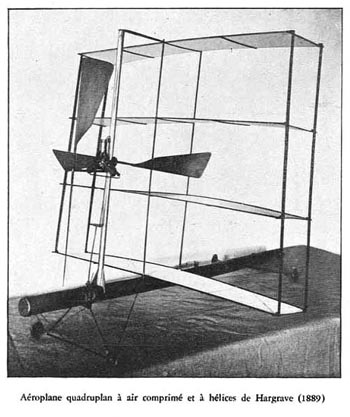
Hargrave
compressed air powered 'quadraplane'
In 1892 Hargrave
discovered that a curved wing surface appeared to give a
greater lift than a flat supporting surface. Then he turned
his attention to research into the behaviour of various
types of kites. During the course of his experiments he
found out that a curved surface had twice the lift as a flat
one, and next he discovered that a kite with two separated
"cells" or double planes, had the greatest stability and
oaring power.

Man-carrying glider, 1893
While the Wright brothers
denied that they owed anything to Hargrave, his discovery of
the cellular kite and his investigations into the
superiority of curved wing surfaces played an important part
in European experimental work which culminated in the first
public flight by Santos-Dumont in France in 1906. His son
and fellow experimenter, Geoffrey Lewis Hargrave, was killed
at Gallipoli in May 1915, and this terrible news caused him
to become seriously ill, and he died in a hospital on July
6, 1915.
|
